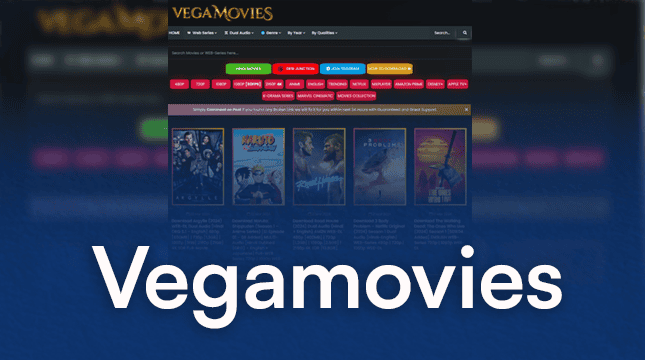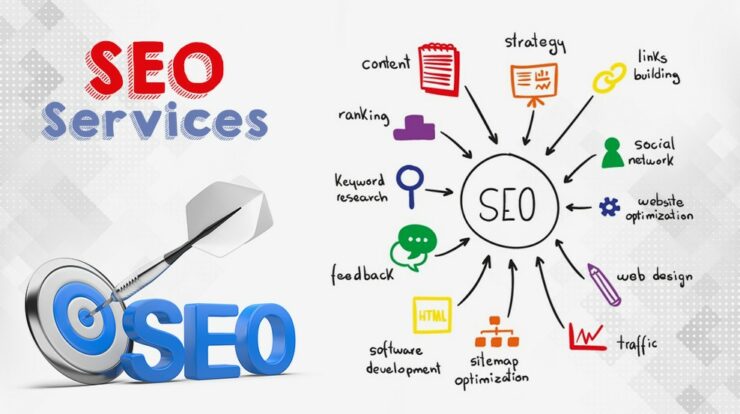
Companies all across the world are learning the advantages of streamlining their operations with sales technology. And one of the most often used technologies is sales engagement software. In this in-depth tutorial, we’ll look at how using a sales engagement platform allows businesses to encourage contact at every stage of a customer’s journey. ensuring that their teams are on the same page and that agreements are closed more quickly.
We’ll respond to the following queries on the features, functions, and advantages of a sales engagement platform. The top 11 platforms currently available will then be revealed.
What is sales engagement?
The many encounters (digital, in-person, phone, etc.) that sellers have with prospects and customers are referred to as sales engagement. This technology helps sales teams easily offer high-quality interactions with prospects and customers at scale.
The primary components of the sales engagement technology stack are depicted in the following diagram. Between the CRM and the rest of the stack is the sales engagement platform, which is the most crucial component. It serves as the engagement process’ administration interface and sends activity data back to the CRM.
CRM is essentially an internal tool for storing and managing data. Companies had to invest in stand-alone sales engagement apps rather than leveraging the CRM itself for these purposes until Salesforce’s release of the Einstein High-Velocity Sales Cloud.
There are five main segments that make up the sales engagement category. While some of these are elements of other apps, some are separate tools or solutions.
- The sales distribution methods for interacting with prospects and customers are called channels. These incorporate a variety of technologies, including dialers, texting, sales emails, video, web conferencing, direct mail, chat, LinkedIn, and other social media.
- Reps may obtain real-time recommendations throughout execution thanks to this technology. Email templates and presentation decks, for instance, offer information that salespeople should employ. Buyers’ inquiries may be instantly answered through real-time wikis. Content management and knowledge management are examples of technologies. Applications for sales enablement that offer solutions for onboarding and training incorporate a lot of this capability.
- Optimization offers in-depth analysis of sales engagement execution, which may be followed by data-driven automated recommendations.
- Automation of sales activities For instance, the technology may automatically email early offers to the finance team rather than requiring sales representatives to do so.
- These platforms provide a central interface for organising, carrying out, monitoring, evaluating, and optimising interactions between sales teams and clients across many contact points and channels. The sales engagement technology market’s growth is mostly driven by this type of platform.
What do sales engagement platforms do?
They are used by businesses for a variety of purposes, such as:
- Automating sales processes, such as sending follow-up emails
- Gathering consumer information so they may look for more quality leads
- Contacting clients using their preferred means
- Arranging their everyday activities and chores
- Analyzing sales data and producing reports to help them make more informed decisions
and more
Sales interaction platforms cover a lot of territory. But its biggest benefit is that it gives businesses a simple, straightforward platform from which to engage with clients and prospects. In this approach, your clients may always interact favourably on the channels they want.
Why do you need a sales engagement platform?
More and more companies are learning about the advantages of using these technologies as their popularity grows. You can be sure that sooner or later, your rivals will give it a try.
To maintain a quick, happy, and stress-free purchasing experience for your consumers, you need a sales engagement platform. It provides salespeople with the resources they need to offer high-quality touchpoints along your pipeline and automate jobs. They’ll have a quicker and more successful sales cycle that keeps them one step ahead of the competition by working with the most accurate, structured, and current information.
What distinguishes a sales engagement platform from a sales enablement platform?
Sales enablement and engagement are frequently confused. The fact that they sound so similar doesn’t really help. Yet, the fact that some of the features provided by both platforms serve the same function is what primarily contributes to the misunderstanding.
So let’s concentrate on the main distinction. The primary goal of sales enablement is to ensure that sales representatives have all of the information they and their clients require at all times. Engagement, on the other hand, is more concerned with ensuring that representatives are given the authority to convey that information in a way that the customer is most likely to find compelling.
11 Best Sales Engagement Platform In 2023
Let’s have a look at some of the best sales engagement platforms for business.
#1. HubSpot
Whether you have two or 500 sales representatives, the product is designed for you. (Sales Hub Free, Sales Hub Starter, Sales Hub Professional, and Sales Hub Enterprise).
Since it addresses the problem of friction, which is a natural byproduct of development, Sales Hub is exceptional. Sales Hub will fix this issue by:
automating the sales process to free up sales representatives’ time.
analytics that provide you detailed insight into the performance of your sales force (which also helps you offer a consistent customer experience).
By placing your clients at the forefront of everything you do, you can streamline and personalise outreach.
With CPQ support, more deals can be closed more quickly.
#2. Zendesk Sell
The inventors at Zendesk are aware that sales interactions may be difficult, so they strive to keep things straightforward. It has user-friendly features for acquiring and analysing crucial consumer data, maintaining standardised content, and seamlessly connecting with customers on their chosen channels. Simply put, Sell enables salespeople to communicate effectively with the proper individuals and recognise what works and what doesn’t.
Powerful lead generation capabilities are also available in Zendesk Sell. Artificial intelligence is used in the programme to swiftly qualify and route leads to the appropriate salesperson, letting them interact with the leads most likely to make a purchase before the competition does.
Zendesk Sell is a mobile-enabled cloud-based CRM sales platform that caters to both small and large organizations. It’s also the sort of platform that can expand along with you. This guarantees that when your client base grows, you won’t outgrow the software’s capabilities.
Features:
- lead generation
- Sales participation
- Prospecting equipment
- Automation of work processes
- Analytics and reporting
#3. Mailshake
Mailshake is a sales interaction and automation tool. It is intended primarily for cold email outreach in sales and marketing.
With Mailshake, you can engage prospects over the phone, send tailored emails at scale, or connect with consumers on social media. Moreover, this technology compiles all data into a single sales cadence and dashboard.
The tool also offers a number of native and third-party connectors, including HubSpot.
What we like: Sales teams can customise the content and frequency of each communication with the platform’s automated email campaigns. A more meaningful conversation with consumers results from personalization.
#4. Clearbit
B2B companies are the only focus of Clearbit, a marketing data platform. Every 30 days, they continuously renew the data as part of their strategy for giving current information. Moreover, it provides a prospector tool that gives consumers access to 200 million contacts. By selecting parameters, it enables them to look for perfect candidates.
Each contact in your CRM database receives the most recent information instantly thanks to Clearbit’s enrichment function. By monitoring visitors to the business website, the programme also contributes to the generation of leads. These leads are then scored by Clearbit, which then assigns them to the right salesperson.
Features:
- Lead generation
- performance indicators
- Campaign Management
- email advertising
- creation of proposals
#5. Hippo Video
Consider adopting Hippo Video if your team wants to produce videos and video workflows. A platform for the distribution and customization of videos is called Hippo Video.
Make use of the platform to help you create customised videos for your account-based selling approach. Your films are also a fantastic approach to providing consumers with assistance and product education after your sales team closes the transaction. You can also send video emails to your prospects by integrating Hippo Video with HubSpot.
What we like: Hippo Video makes video production simple. With a little instruction, many teams discover that everyone can capture and edit a video. Hippo Video has a superb customer care team accessible to answer questions in addition to the simple UI.
#6. Zoho
Zoho CRM, a bigger CRM database, has an offshoot called Zoho SalesIQ. It is intended to be connected with a CRM and other communication channels. The programme focuses on timing and collects information on leads and customers in order to identify the ideal moment for a representative to get in touch.
In order to engage with clients in real-time, Zoho Sales IQ also has a live chat tool. In order to converse with consumers and respond to simple queries on their schedule, users may also design and personalise a chatbot.
Features:
- Integrations with third parties
- monitoring website visitors
- Live conversation
- generation of content
- Reporting/Analytics
#7. Klenty
Klenty is a sales engagement tool that assists teams with outreach, email personalization, and follow-up automation.
The technology makes it simple to tailor emails to specific prospects.It also takes into account details like when you last emailed a prospect or their office hours when deciding when to send them a message. Using Klenty, emails will be delivered to prospects’ inboxes rather than spam.
Klenty can assist you in integrating sales engagement with your data-based selling approach. The platform delivers performance measurements, team reports, and data and insights. With Klenty’s connection, you can sync all of your emails as well as associated actions made by prospects and customers (such as email opens, CTA clicks, email answers, and chats) in your HubSpot CRM.
What we like: Klenty is a great alternative for businesses seeking an all-in-one solution. The platform makes it simple to interact with prospects thanks to its wealth of sales support capabilities and customization options. Your sales staff will find it straightforward to browse because of the basic user interface.
#8. Apollo.io
For businesses aiming to grow transactions, Apollo.io primarily seeks to identify areas where user business habits may be improved. Users are urged to identify and use best practises that lead to the highest success through data collection and analysis.
Users may search through millions of possible connections with Apollo.io’s prospect search tool. Also, the programme has an interface that enables LinkedIn-specific prospecting. The best leads are immediately uploaded to a CRM database.
Features:
- administration of call lists
- correlation analysis
- Collaboration tools
- Prioritization
- Prospecting equipment
#9. Salesloft
For firms focusing on sales acceleration and customer interactions, Salesloft is a B2B sales engagement platform. The application includes a wide range of features for your whole team, including sales leaders, managers, operations, SDRs, BDRs, account executives, marketers, and customer success reps.
You can automate, customise, and sync rep-to-prospect communication by combining Salesloft with a CRM like HubSpot (which interfaces with the platform). Sales Loft collects involvement through email, phone calls, social media, video, etc.
What we like: Because all communication channels are included on a single dashboard, Salesloft was created for team collaboration. Sales representatives may easily take advantage of functions like one-click phoning and messaging with prospective customers thanks to this centralised design.
#10. Freshsales
Freshsales is a tool designed to help salespeople through the full process, from generating leads to closing deals. Each lead’s interactions with brand material are fully visible in Freshsales. Users may also watch consumer interactions with web pages and emails and construct data-capture web forms that are fully customizable.
Freshsales also seeks to automate as many repetitive tasks as it can. Freddy, the site’s artificial chatbot, can converse with users in real time.The platform also provides internal collaboration capabilities, such as a Slack interface that facilitates easier team communication.
Features:
- Lead nurturing
- Data management
- activities brought on by events
- Automation of work processes
- mobile access
#11. Pipeline
Sales productivity and engagement are managed through Pipeline, a CRM. The tool groups all of the components of your sales funnels into a single, editable list for simple access.
A daily agenda generates itself to save representatives time and make sure they know which prospects to engage that day. The application automates the process of creating emails and segments your consumers, making any follow-up communication simple. Because Pipeline is mobile-friendly, your remote staff can simply access the data they want from any location.
What we like: Pipeline features a strong email marketing section in addition to an interactive system for salespeople and clients. The software enables sales representatives to develop email campaigns and track information like open rates and whether prospects downloaded firm content.
FAQs
Is Salesforce a sales engagement platform?
Salesforce provides Sales Engagement capabilities to assist your sales professionals in connecting with the best leads, increasing customer conversion rates, and developing new sales prospects—all from a single dashboard.
Why do you need a sales engagement platform?
These platforms provide a central interface for organising, carrying out, monitoring, evaluating, and optimising interactions between sales teams and clients across many contact points and channels. The sales engagement technology market’s growth is mostly driven by this type of platform.














